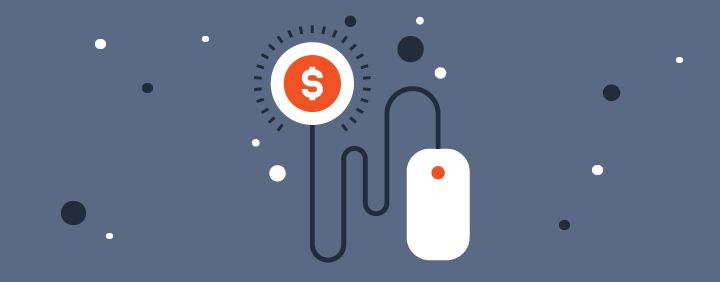When landing on your site, what does a visitor want to do next? Part of your job is to predict what the consumer wants and deliver it. On average, people will stay on your website less than a minute, so you must capture their attention within the first few seconds. This is only the beginning.
Once people move away, there’s no way to bring them back. A bad first impression is enough to turn someone off for a lifetime – both off and online. You need to create an inviting atmosphere for your website visitors and make sure they know how fantastic your brand is within a few seconds.
Fortunately for you, there is a ton of research on the topic that you can learn from. Let’s take a look at UX design and how it walks hand-in-hand with high conversion rates. Learn what it takes to increase the sales on your site through design.
What is UX Design?
In a nutshell, UX design is website planning and creation based on the user experience. UX designers understand how to enhance customer satisfaction by optimizing usability, accessibility, and enjoyment. This type of design goes above and beyond aesthetic appeal to providing page elements that will fulfill customers, leading them down the road to conversions.
According to Semantic Studios, these are the critical elements of the user experience:
- Useful – Does your design provide elements that are useful to the customer?
- Usable – Is there ease of functionality across all devices (test on PC, Android, and iOS).
- Desirable – Are aesthetic appeal and necessary elements present?
- Valuable – Does your design solve problems and answer questions?
- Findable – How easily can a visitor discover what they are looking for?
- Accessible – Can anyone access public pages without effort?
- Credible – How trustworthy are the design elements used?
These facets are considered when a UX designer undertakes any project. As you develop a design routine that involves asking these questions, you will likely see a rise in the conversion rate of your website.
What is a Website Conversion?
A conversion is when a website visitor takes an action that you want them to take. Converting doesn’t just apply to sales. A conversion happens when a blog reader clicks through to an external piece of content or signs up for your newsletter; it happens when a visitor likes your social media page. Basically, when someone takes an action on your website they have converted.

Depending on your overall goals, clicking through to read the next blog post wouldn’t be considered a conversion. But, when a visitor becomes a contact and a lead turns into a customer, these are conversions. Does the action bring you closer to a sale? Is it part of your overall strategy? If so, you can place it in this category.
A sales funnel is a critical element in eCommerce of any kind. A path that you can direct traffic through is what will ultimately lead to sales. Hence, the customer’s hypothetical journey through the pages of your website needs to be a primary focus of UX design.
What is the Difference Between UX Design and Conversion Rate Optimization (CRO)?
The best explanation of the difference between UX and CRO in application to websites is from a man named Braden Hoeppner on Quora.
This is what Braden said:
“A UX designer is the person typically responsible for constructing the interaction or visual representation of a user experience project. They take feedback from user research and interpret it into a solution for the business and the users. UX designers will come from a very wide variety of backgrounds and I suspect are often using any one of a variety of wireframe, prototype or design software to deliver their output.
A “Conversion optimization consultant” is usually someone who a business contracts for a short period of time to evaluate a particular workflow. They typically come from a web analytics background and will more often than not propose a series of tests to run to improve the conversion of a flow. They will likely work with a UX designer to execute these tests. Tools that they may use would be: web analytics, AB / MVT testing tools, design software and PPT ;-)”
“
As you see, excellent UX design is directly related to high conversion rates. Without one, you cannot have the other.
What You Need to Know
- First, in the modern era, most people access websites from their mobile phones. So, no matter what industry you’re in, use a responsive website theme. The last thing you want is to turn traffic away because your images didn’t load or crucial content couldn’t be accessed. Put your primary focus on the mobile experience.
- Next, about and contact pages are critical for your success. People land on your site looking to find out about who you are and what your products are. A contact page lets potential customers know that you can be reached if they need to speak to you. These pages are paramount.
- Then, if you’re an eCommerce business, give ample attention to your checkout process. Tons of people will bail at the last second over privacy issues, complications, and other details. If your shopping cart is optimized, you’re more likely to earn revenue from your efforts. The checkout experience should be simple, trustworthy, and fast.
- Finally, learn as much as you can about CTAs, microcopy, and A/B testing. These are the fundamentals of conversion success. If you only ever master these three facets of website creation, it may be enough to build an empire.
Conclusion
Great UX design and high conversion have a direct correlation with one another. If you’re looking to increase sales, build a list, or just improve internal website traffic, UX design is your key. Great UX design is useful, usable, desirable, valuable, findable, accessible, and credible.
Learn as much as you can to improve the success of your websites; as a website designer, you will find success through mastering conversion rate optimization.

About the author
Jared Carrizales leads the team at Heroic Search Tulsa. They help companies with content marketing, social advertising, and digital public relations. Get in touch with Jared on Twitter.


